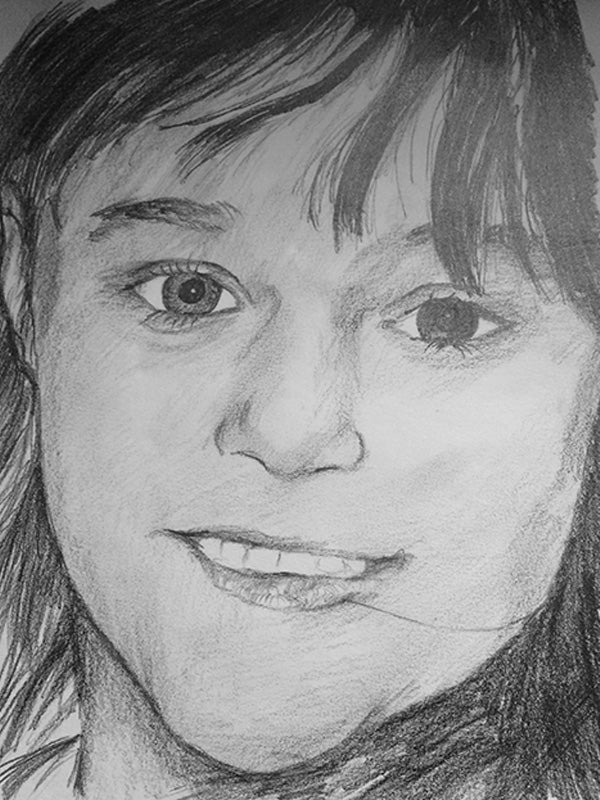Mixing matte and gloss
Charcoal and graphite can produce some interesting results with the combination of the matte of charcoal and the gloss of graphite. Charcoal produces a richer black than graphite and can be lightened by lifting color. It’s best used for rich, non-reflective darks when mixing with graphite or even a carbon pencil. Graphite produces a range of tones from a very light gray to very dark, depending on the hardness used. Unlike charcoal, the more layers of graphite you lay down, the glossier it becomes.
Together, the matte and glossy look creates a unique drawing that can sometimes look different depending on the angle its viewed from. Charcoal and graphite each have their own characteristics and reflect light differently.
My example didn’t scan well, but you can see one eye is done with graphite and the darker with charcoal. I did this quickly and deliberately to show the difference between the two, although if it weren’t an example, the right eye would be more realistic looking.

The hair is a combination of graphite and charcoal. Again, the scan doesn’t show the features well, but the hair has a nice mixture of matte and gloss.
I prefer to use only 2B mechanical pencils for drawing, but many artists prefer to use the entire range. I find darkening to a rich black too difficult with pencil as I have to lay down too many layers and get too much gloss.
When covering graphite with charcoal it’s good to remember that the more layers of graphite, the more difficult it is to get the charcoal to adhere. I use a light spray of workable fixative and if my graphite becomes overly glossy, I’ll spray it with a matte fixative.
When combining graphite and charcoal, I’ll often apply charcoal with a brush. I use the dust from my Nitram batons. Because they don’t produce as much residue when sharpened, I buy batons to sand to dust. I like to have at least a half jar available at all times. With graphite, I buy General’s powdered graphite. General’s also makes a powered charcoal, I’ve never been able to feel all warm and fuzzy about it. With my Nitram Sharpening Bloc I can turn a baton into powder in no time.
When using charcoal and graphite together for a portrait, I don’t use any graphite on such features as the eyebrows because the brows aren’t shiny and highly-reflective, and I don’t want them to look unnatural. Some artists can perfect natural looking eyebrows with graphite. I am not one of them.
Of course, it’s best to work on a heavy, high-quality paper when using any mixed media. Because graphite requires a smooth surface and charcoal needs some tooth to adhere, meet the two in the middle with a fine tooth paper. Sometimes I’ll gesso the paper with a brush that will give enough texture. If the paper is smooth, it will definitely need something added so that the charcoal adheres. Gesso or fixative are good for solving adherence problems.
Remember, it’s much easier to lay charcoal on top of graphite than it is the other way around. It does take some practice, but the end result is very worthwhile.
